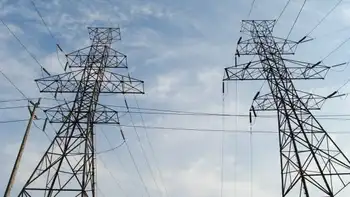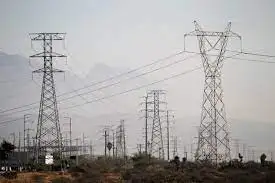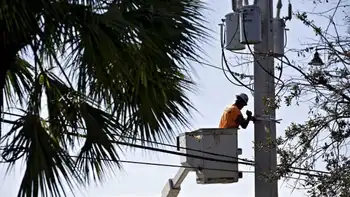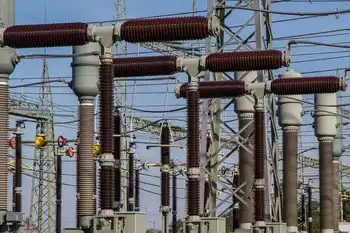Wind Farm Plan Draws Criticism
NORFOLK, Virginia -- - Proposals to build windmills off the Atlantic coast are meeting with resistance from environmentalists who might be expected to support an alternative, "clean" energy source.
Offshore wind farms exist in Europe but not in the United States. A company planning windmills off Virginia, New York, New Jersey, Maryland, Massachusetts and Delaware says the farms would provide energy without emitting greenhouse gases that pollute the air.
Environmental and wildlife groups argue, however, that the projects represent an offshore land grab of public property for private use. They also contend the farms will mar the natural beauty of the coastline, interfere with fishing, diminish property values, hurt recreation and tourism, and may prove harmful to migratory birds.
They'd prefer that the windmills be placed farther out than within a few miles of shore as proposed, in places where their effects would me minimized.
"I'm committed to wind energy, but you wouldn't put a wind farm in Yosemite Park," said Robert F. Kennedy Jr., son of the former US attorney general and president of Waterkeeper Alliance, a New York environmentalist group.
Dennis Quaranta, president of Winergy LLC, based in Shirley, N.Y., said the critics are suffering from a case of NIMBY.
"Everyone is a great environmentalist, until it's in their area," Quaranta said. "Then it's not in my back yard, not in my beach view, not in the ocean, not anywhere."
That said, the company is willing to listen to and respond to objections, he said. Winergy recently removed three of four potential sites from its wind farm plan for Virginia after learning that the Navy was concerned because military operations take place there.
"We do listen to what people have to say," Quaranta said. "We don't try to buck the system."
In all, Winergy has identified about 20 offshore sites in federal waters and begun the application process for permission to build there.
The company plans to add more sites. Potential customers include local utilities that could resell the power generated by the windmills, large commercial users, and state and local governments.
In Virginia, Winergy wants to build a $900 million wind farm at Smith Island, near the mouth of the Chesapeake Bay, in federal waters three miles off the coast. The site off Virginia's Eastern Shore peninsula covers 45 square miles with an average water depth of less than 60 feet. It was selected in part because of its wind speeds, proximity to major transmission lines and lack of marine mammal activity.
The 271 turbines would either be placed atop platforms or slipped over long poles that would be driven into the bottom of the Atlantic Ocean. The base of each windmill would be 220 to 280 feet, and the wingspan of the turbine blades would be about 330 feet tip to tip.
The windmills would generate up to 975 megawatts of electricity an hour. One megawatt is enough to power 1,000 homes for an hour; since the wind likely will blow only about 30 per cent of the time, one megawatt probably would power 300 homes.
The US Army Corps of Engineers' Norfolk district is one of a number of agencies that must approve the project. Quaranta said the permit process could take three to five years and then it would take at least a year to finish building.
The corps received about 50 written comments from the public by the Nov. 19 deadline and is reviewing them, said Rick Henderson, the Norfolk district's lead project manager for Winergy's application.
Henderson said many of the individuals, government agencies and private organizations supported wind energy. However, they raised questions about the effect on birds' migration routes, navigation, marine mammal activity, military operations and aesthetics.
Those are the same kinds of concerns held by environmental and other groups critical of such projects, including the first offshore wind farm proposed in America, in Massachusetts' Nantucket Sound.
That project, proposed by Cape Wind Associates LLC, involves 170 windmills on 25 square miles of ocean, about four miles from shore. In November, a federal judge in Boston denied a citizen group's motion for a restraining order, paving the way for construction of a data collection tower that is the first step in building that wind farm.
Allowing these projects to proceed could result in a lot of additional industrial development of the coastline, including offshore oil rigs, said representatives of groups including the Humane Society of the United States and the Alliance to Protect Nantucket Sound. The groups also say there needs to be a federal process for environmental review specifically for offshore wind energy projects.
"We do not want to just have a giveaway of the coast," said Sharon Young, marine issues field director for the Humane Society.
Kennedy, an environmental lawyer, said the problem is that there are no regulatory standards for the construction of industrial projects in the territorial seas or on the continental shelf.
The Army Corps "has a right to give you a permit to say you're in compliance with the Clean Water Act, but it doesn't have a right to give you a permit that says you can privatize public land on the continental shelf," Kennedy said.
Henderson said that in Virginia, the corps is "essentially telling the company that they can place a structure on the sea bed. The concept of granting use of public waterways to private corporations is commonplace in the United States."
An official with The Nature Conservancy, which owns many of the barrier islands off Virginia's Eastern Shore, said the environmental group hopes Winergy will provide more information about the ecological effects of the project.
In Virginia, the next step is for Winergy to review the public comments. If the company decides to proceed with the permitting process, it would have to respond to all of the concerns raised in those comments, Henderson said. The corps would evaluate the responses and also would need to decide whether an environmental impact study is warranted.
Related News

ETP 2017 maps major transformations in energy technologies
BERLIN - The global energy system is changing. More people are connecting to the grid as living standards improve around the world. Demand for consumer appliances and electronic devices is rising. New and innovative transportation technologies, such as electric vehicles and autonomous cars are also boosting power demand.
The International Energy Agency's latest report on energy technologies outlines how these and other trends as well as technological advances play out in the next four decades to reshape the global energy sector.
Energy Technology Perspectives 2017 (ETP) highlights that decisive policy actions and market signals will be needed to drive technological development…




